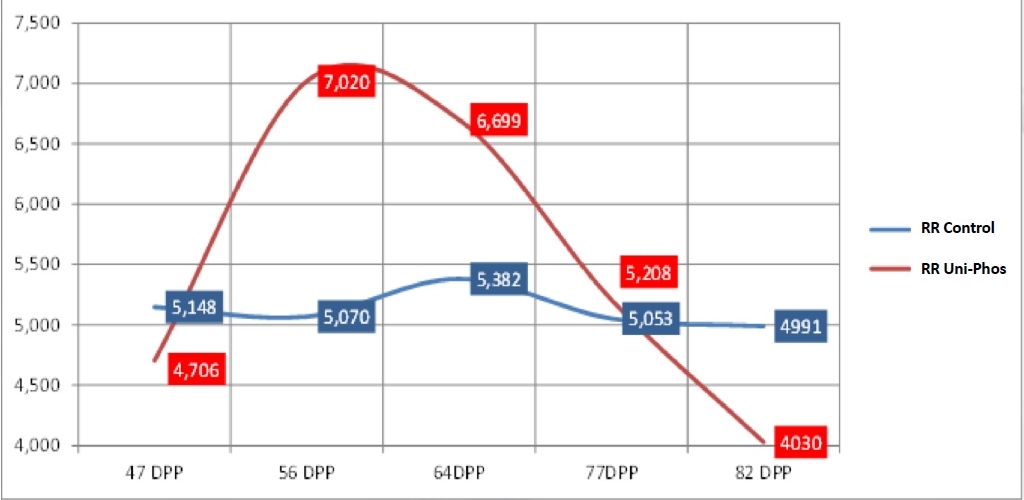Good crop agronomy is very much a balancing act; adding a little bit of this, and a little bit of that – with a whole lot of hoping the weather holds out – in a bid to bring prosperous crops through to harvest.
Phosphorous is an essential part of the equation for all crops, but particularly for potato growers, with an adequate supply essential for ensuring desirables like good tuber numbers and uniformity, as well as tuber dry matter content.
But providing this isn’t always straightforward, with it widely accepted that the majority of P doesn’t actually get anywhere near the growing crop because it gets locked up in the soil, explains John Haywood of Unium Bioscience.
And with an ethos of maximising crop production with innovative solutions, Unium has recently launched its nutrient-biostimulant product, Luxor, to help growers maximise the availability of P.
But what exactly is Luxor and how does it work?
“Luxor is liquid formulation which contains a 4-14-5 unique blend of nutrients, humic and fulvic acid, in combination with L-PGA (pidolic acid), to enhance nutrient-use efficiency, increase photosynthesis and carbon fixation,” explains John. “It’s designed for use in both soil and foliar applications, and is compatible with a range of fertilisers.”
John adds that in comparison with competitor products, Luxor contains 2-3% more organic acids. “This further enhances the nutrient availability and uptake, prevents adsorption to soil, increases cation exchange capacity and supports soil biology.
“What’s more, it has a low salt index making it ideal to be placed near the seed/tuber as it will pull less water from the seed, reducing stress.”
On top of this, the high organic content of fulvic and humic acids will function as a ‘soil builder’, supporting microbial activity, he explains.
According to John, Luxor is able to achieve this due to the high-grade formulation which enhances the delivery of the nutrients to the plant at key times within the crops growth cycle. “What’s more, it also stimulates the soil biology in order to maximise other nutrient availability, with L-PGA increasing nitrogen assimilation within the plant.”
Luxor’s benefits have been proven in a series of trials, across a number of years, which have shown statistically significant increases to potato yield and tuber fresh weight when incorporated into the programme.
In terms of usage in potatoes, John concludes that Luxor can be applied at planting or as a foliar application at key growth stages, at a rate of 2-4 l/ha (based on soil P) in most situations.
“Luxor has proven its potential and capabilities across not only potatoes, but also maize, cereals, oilseed rape and vegetables. It also complements other products in the portfolio, including Tiros/Tarbis – our biological endophytes that solubilise and sequester P from the soil, as well as calcium phosphite which maximises root growth and activity (exudation) to bring the P to the crop.
“Growers can be confident that incorporating solutions like Luxor into the programme this season will boost both the efficient supply of P and soil biology – both of which are fundamental for a profitable potato crop.”



